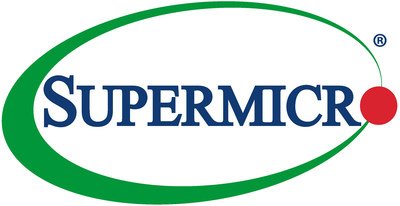Supermicro Expands Manufacturing for AI and Liquid-Cooled Solutions
SAN JOSE, Calif., June 18, 2024 — Supermicro, Inc. , a Total IT Solution Provider for AI, Cloud, Storage, and 5G/Edge, continues to expand in Silicon Valley with new campuses as the demand for liquid-cooled data center increases. The new facilities will be part of the new liquid-cooled ecosystem, reducing the time needed to deliver to customers worldwide. These new facilities will focus on delivering entire plug-and-play liquid-cooled solutions, from systems to racks to water towers. With AI factories becoming more prevalent, liquid-cooled data centers are critical to meet these increasing customer demands for AI-focused workloads. Liquid-cooled data centers increase the amount of AI compute performance per watt, resulting in more performance per data center. In addition, electricity consumption and environmental impact are reduced, and operational expenses can be up to 40% lower compared to traditional, air-cooled data centers.

“Supermicro has the highest performing generative deep learning and inferencing AI platform and clusters which benefit from liquid-cooled technologies,” said Charles Liang, president and CEO of Supermicro. “Many data center owners are looking for electricity saving Direct Liquid-Cooled solutions. Supermicro is developing building block liquid-cooled solutions for AI factories and the HPC market. We anticipate that liquid-cooled data centers will grow from historically less than 1% to an expected 15% and up to 30% of all data center installations in the next two years. This expansion positions us to capture the majority share of that growth. New data centers will run more efficiently, reducing their carbon footprint, and can be virtually free, compared to air-cooled data centers, with significant operational savings realized through lower electricity use over time.”
“We are thrilled that Supermicro is expanding in San Jose and leading the charge to reduce the impact of data centers,” said Matt Mahan, Mayor of San Jose, CA. “Supermicro represents the best of Silicon Valley as a company that continues to push the boundaries of both technology and sustainability.”
Supermicro, as a total solution provider, supplies all the components needed for an efficient and optimized liquid-cooled solution. From the Supermicro optimized cold plates to the coolant distribution manifolds (CDMs) to the redundant coolant distribution units (CDUs) and even the external cooling tower, the entire end-to-end solution is designed and tested by Supermicro engineers, which results in a higher quality solution, enabling organizations to get more productive sooner.
Many Supermicro servers are explicitly designed for high-performance NVIDIA GPUs for AI processing, such as the very high-density 4U-8GPU systems, the Intel CPU-based SYS-421GE-TNHR2-LCC, or the AMD CPU-based AS -4125GS-TNHR2-LCC. In addition, many Supermicro servers, such as the popular 8U-8GPU systems, are liquid-cooled ready, as well as NVIDIA-based 1U ARS-111GL-NHR-LCC, which includes the Grace Hopper Superchip. Liquid-cooled servers include the 8U-20-node SuperBlade®, which provides the highest CPU and GPU computing density available today. The 2U-4 node Supermicro BigTwin® and the 4U-8 node FatTwin® multi-node servers are optimized for liquid cooling and are in high volume production today.
Supermicro continues to work closely with data center operators to match the right server technology to the demanding workloads, which are unique to each organization and cloud service provider. Many of these application-optimized servers are designed to be liquid-cooled, which reduces the overall operational cost of the data center.
Many customers have limited experience handling liquid inside data centers, requiring vendors to perform the installation and acceptance testing along with future maintenance and warranty service. On-site support is critical, and Supermicro’s service organization is highly trained in liquid-cooling deployments.
